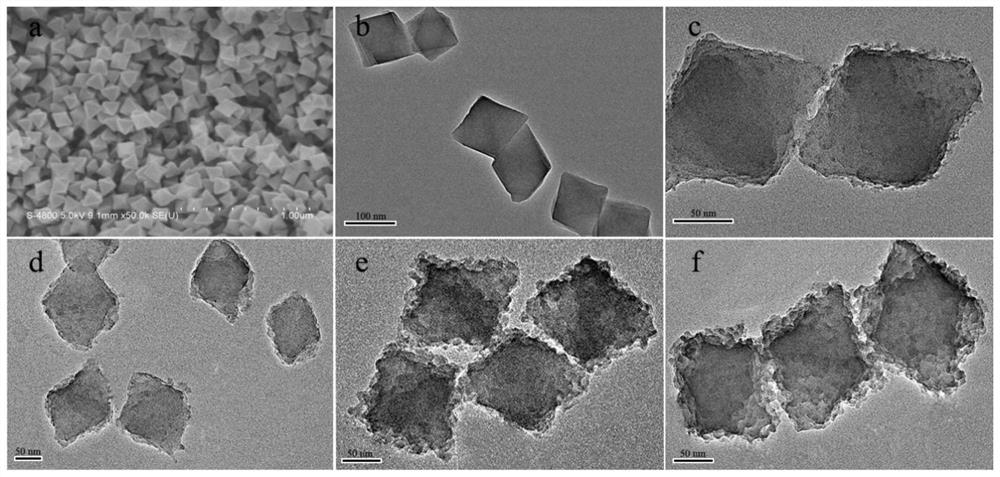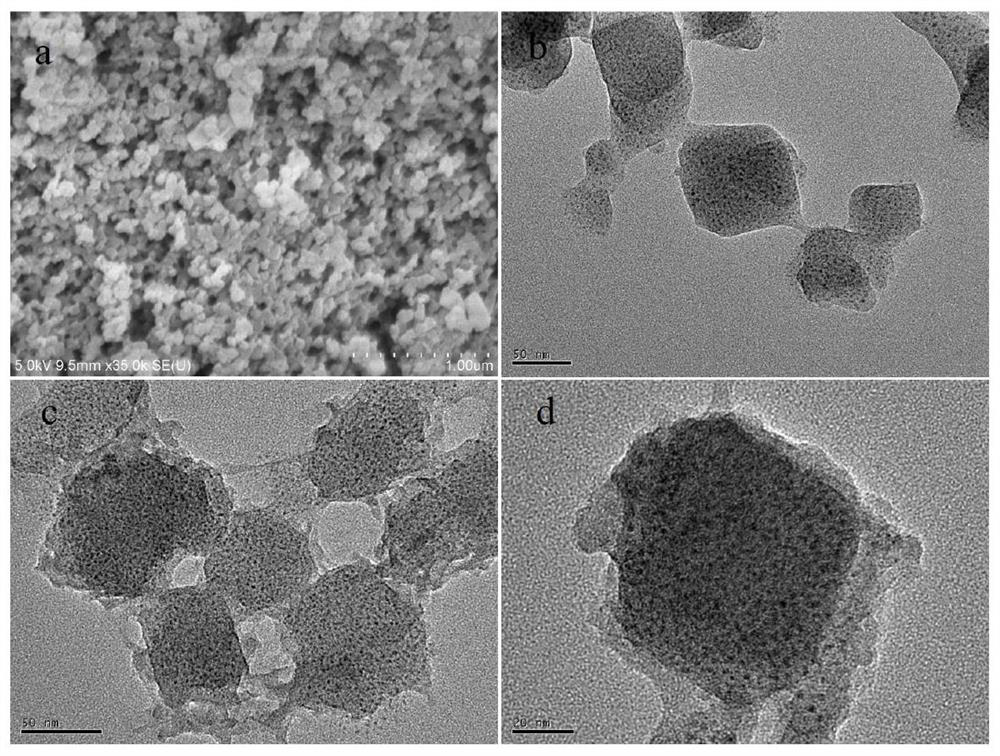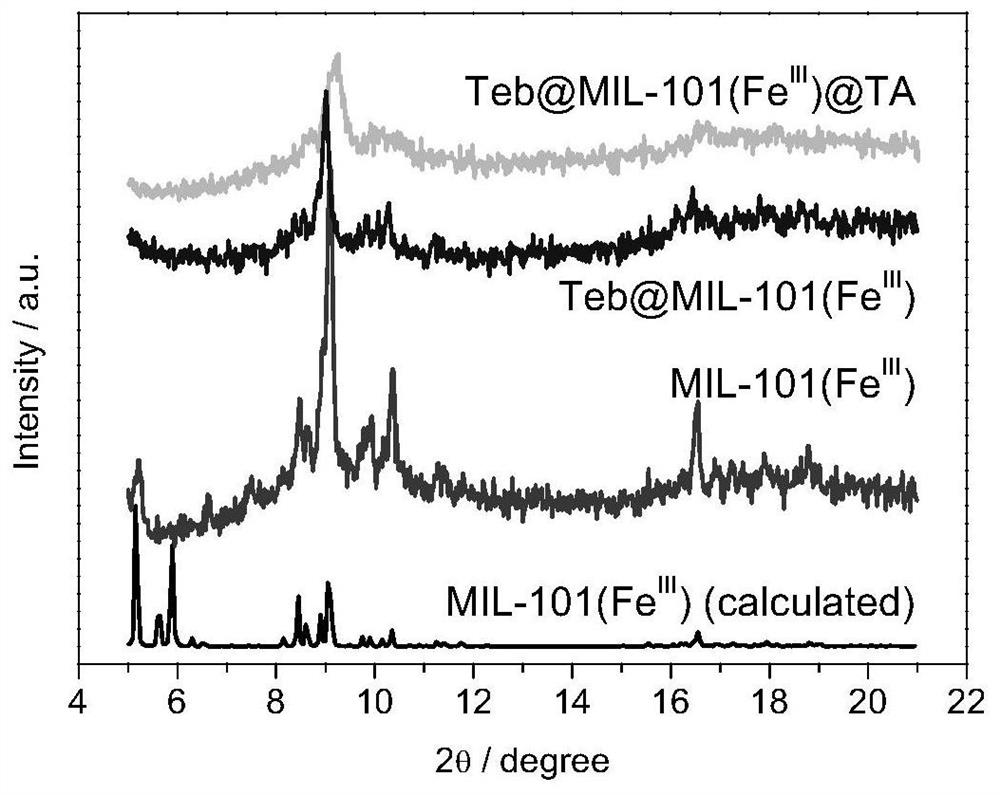Preparation and application of metal-organic framework nano-pesticides encapsulated by coordination polymers
A technology of metal-organic frameworks and coordination polymers, applied in applications, botany equipment and methods, animal repellents, etc.
- Summary
- Abstract
- Description
- Claims
- Application Information
AI Technical Summary
Problems solved by technology
Method used
Image
Examples
Embodiment 1-1
[0041] Example 1-1 A preparation method of a metal-organic framework nano-pesticide encapsulated by a coordination polymer
[0042] Include the following steps:
[0043] (1) 2-aminoterephthalic acid or terephthalic acid (1.24mmol) and FeCl 3 ·6H 2 O (2.48mmol) was dissolved in 25mL of DMF, then glacial acetic acid (18.6mmol) was added, after mixing evenly, it was transferred to a stainless steel reaction kettle and reacted in an oven at 110°C for 24h. After cooling to room temperature, wash with ethanol and DMF three times in sequence, and then reactivate with ethanol for 24 h under reflux, collect the nanoparticles by centrifugation, and dry them in a vacuum oven at 60°C to obtain MIL-101(Fe III ) nanoparticles.
[0044] (2) Take a certain amount of MIL-101 (Fe III ) nanoparticles were dispersed in an ethanol solution containing a certain concentration of tebuconazole (Teb), stirred at room temperature for 24 h, then washed with water and ethanol in turn and centrifuged u...
Embodiment 1-2
[0047] Example 1-2 A preparation method of a metal-organic framework nano-pesticide encapsulated by a coordination polymer
[0048] Include the following steps:
[0049] (1) At room temperature, trimesic acid (0.1mmol) was dissolved in a mixed solvent (200mL ethanol and 100mL DMF) of ethanol and DMF to obtain solution A; Cu(CH 3 COO) 2 ·H 2 O (0.15mmol) was dissolved in a mixed solvent of water and DMF (200mL ethanol and 100mL DMF) to obtain solution B; under high-speed stirring, solution A was quickly added to solution B, and after stirring for 1h, centrifuged to obtain HKUST- 1(Cu II ) nanoparticles.
[0050] (2) Take a certain amount of HKUST-1 (Cu II ) nanoparticles were dispersed in an ethanol solution containing a certain concentration of tebuconazole (Teb), stirred at room temperature for 24 h, then washed with water and ethanol in turn and centrifuged until no tebuconazole signal in the supernatant was detected by HPLC , freeze-dried to obtain Teb@HKUST-1 (Cu II...
experiment example 1
[0054] Experimental example 1 adsorption kinetics measurement:
[0055] Load time to MIL-101(Fe III ) The impact of nanoparticle drug loading: get a certain amount of MIL-101 (Fe III ) nanoparticles were dispersed in an ethanol solution containing tebuconazole, stirred at room temperature, 0.2 mL was sampled at different time points, then washed with ethanol and secondary deionized water and centrifuged until the supernatant could not be detected by HPLC Tebuconazole signal in , and then use a certain volume of 0.5M HCl to decompose Teb@Fe III -After the MIL-101 nanoparticles, the volume was fixed to a certain volume with ethanol, and determined by HPLC.
[0056] Effect of different tebuconazole concentrations on Fe III -Influence of MIL-101 nanoparticle drug loading: a certain amount of MIL-101(Fe III ) nanoparticles were dispersed in ethanol solutions containing different concentrations of tebuconazole, stirred at room temperature for 24h, then washed with ethanol and se...
PUM
 Login to View More
Login to View More Abstract
Description
Claims
Application Information
 Login to View More
Login to View More - R&D
- Intellectual Property
- Life Sciences
- Materials
- Tech Scout
- Unparalleled Data Quality
- Higher Quality Content
- 60% Fewer Hallucinations
Browse by: Latest US Patents, China's latest patents, Technical Efficacy Thesaurus, Application Domain, Technology Topic, Popular Technical Reports.
© 2025 PatSnap. All rights reserved.Legal|Privacy policy|Modern Slavery Act Transparency Statement|Sitemap|About US| Contact US: help@patsnap.com



